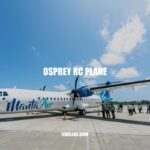Exploring the World of Steam-Powered RC Boats
Steam powered RC boats are a unique fusion of old and new technology. Since the early 1800s, steam engines have been used to power boats. But today, with the rise of remote control and miniature engineering, hobbyists are able to combine these traditional engines with modern remote control technology. Steam powered RC boats offer a distinctive experience different from the common electric and gas RC boats. Not only are they charming and visually appealing, but they also carry forward the heritage of classic riverboats. RC boats have been popular for many years, but with their traditional design and intricate components, steam-powered RC boats offer an entirely new level of challenge and reward. While they may require more attention and expertise than other types of RC boats, enthusiasts enjoy working with steam-powered engines as they are much more complex than other power sources used in remote-controlled boats. In this article, we will delve into the history of steam-powered boats, explain steam engines and outline the unique considerations required for creating and operating a steam-powered RC boat. If you’re up for a challenge, keep reading and discover the world of steam-powered RC boats!
History of Steam-Powered Boats
The origins of steam-powered boats date back to the early 1800s, with Scottish inventor James Watt credited with building the first steamship-powered vessel. Since then, steam-driven boats have come to be associated with the Mississippi paddle steamboats, which became famous in the mid-19th century. Steam-powered boats have also played a key role in the development of the United States by enabling the transportation of goods and passengers over waterways. Despite their traditional roots, the technology of steam-powered boats has evolved in innovative ways. Steam-powered RC boats offer a modern way to experience this classic type of navigation. Some key points to keep in mind regarding the history of steam-powered boats:
- The first steamship sailed in 1807
- James Watt is credited with building the first steamship-powered vessel
- Steamships were used to transport goods and passengers over waterways in the 19th and 20th centuries
For those interested in the history and evolution of steam-powered boats, there are many resources available online and in books. Steamboats.org is an online forum dedicated solely to steamboats, featuring forums, news and articles, photos, advertisements, and even a museum section that features images and artifacts from the Golden Age of steamboating. Popular Mechanics writes an entertaining piece on the history of steamboats, as well as a beginner’s guide for building steamboats, including informative videos. Additionally, many museums have boat collections, and exhibitions offer an engaging way to experience and learn about the evolution of boats. Steam-powered RC boats can be a fun way to engage with this history in a hands-on manner.
Were there steam powered boats in the 1800s?
Yes, steam powered boats were invented and used in the 1800s. They were water vessels that ran on steam and were first introduced on western rivers in 1807. Robert Fulton was an American engineer who developed the world’s first commercially successful steamboat called the North River Steamboat in 1807. He used John Fitch’s patented version of the steam engine and became known as the “Father of Steam Navigation.”
Modern Steam-Powered RC Boats
Modern steam-powered RC boats are designed much like classic steamboats but with some important adaptations. These types of boats take the classic design of the steam-powered vessel and add radio control technology and size reduction to create a fun, unique product. Here are some key points to keep in mind regarding modern Steam-Powered RC Boats:
- Modern steam-powered RC boats use a miniature steam engine connected to a conventional RC system
- Due to their size limitations, these boats have shorter run times than traditional steam boats but can be heated up and ready to run in less than 10 minutes
- Modern steam-powered RC boats are designed to fit into specific classes such as tug boats, fishing boats and steam yachts
- These boats offer an alternative to those who wish to sail without the electronic hum of a battery-powered motor
Unlike electric and gas-powered RC boats, steam-powered models offer an experience unmatched by any other type of remote control boat. While there are limited options in the steam-powered RC boat market, some great products are available. Jensen Steam Engines offers miniature steam engines that can be used to power steamboats, including remote-controlled models. Model Slipway offers several steam-powered RC boat models including steam trawlers, tugs, and yachts. The following table provides a comparison of some steam-powered RC boat models:
| Product | Dimensions | Minimum Age | Price |
|---|---|---|---|
| Jensen Steam Engine Model 60 | 7.5 x 4 x 5.5 in | 14+ | $554 |
| Billing Boats 30″ Oseberg Viking Ship | 30.1 x 6.3 x 16.6 in | 16+ | $705 |
| Model Slipway “Sabrina” Steam Yacht | 865mm long, 220mm beam | N/A | $1355 |
How does a steam powered boat work?
Steam powered boats work by using a steam engine to produce mechanical energy that propels the ship. This steam engine is powered by steam produced in a boiler, which burns fuel and heats circulating boiler water until it vaporizes into steam. For more information on steam powered boats, you can visit websites such as maritime-connector.com or read up on steam engine boats on Amazon.
Building Your Own Steam-Powered RC Boat
Building a steam-powered RC boat can be a rewarding project for hobbyists who enjoy building and tinkering. Here are some key points to keep in mind when building a steam-powered RC boat:
- The engines for steam-powered RC boats range from simple oscillating piston engines to more complex poppet valve engines
- RC steamboat kits are available from suppliers such as Miniature Steam, Steam Era Models and Steam Tug Brent
- Custom or modified engines can also be used, but require more technical knowledge and skill
- The hull of a steam-powered RC boat can be made from wood, fiberglass, or other materials depending on the builder’s preference
- The boiler, which contains the water and steam generating components, can be constructed from materials such as copper, brass, or steel
It’s important to remember that building a steam-powered RC boat takes time, effort, and technical skill. Fortunately, there are websites and resources available to help enthusiasts build their own steam engine boats. One such resource is the Steamboats.org website, which provides information on different types of steam engines, resources for building and maintaining steamboats, and forums for enthusiasts to connect and collaborate. In addition, some websites such as Model Steam Engines provide plans and blueprints for steam engine boats. For those looking for a kit to get started, Miniature Steam offers a range of steam engine kits, including kits specifically designed for RC steamboats. Another option is the Steam Tug Brent kit from Steam Era Models, which offers a complete RC kit including steam engine and boiler. Depending on skill level and budget, there are many options for building a steam-powered RC boat.
How much did it cost to make a steam boat?
The total cost of a steamboat was in excess of $20,000.
Conclusion
In conclusion, steam-powered RC boats offer a unique and exciting way to enjoy the hobby of remote control boating. While they require more knowledge and technical skill to build and operate than electric or gas-powered RC boats, the rewards of building and running a steam engine can be great. Whether building their own steam-powered RC boat or purchasing a kit, enthusiasts can enjoy the classic appearance and powerful performance of a steam engine boat. Websites and online forums provide valuable resources for those looking to get involved in building or operating steam engine boats. By combining traditional steam technology with modern remote control features, the steam-powered RC boat is a unique and thrilling experience for hobbyists of all ages.



